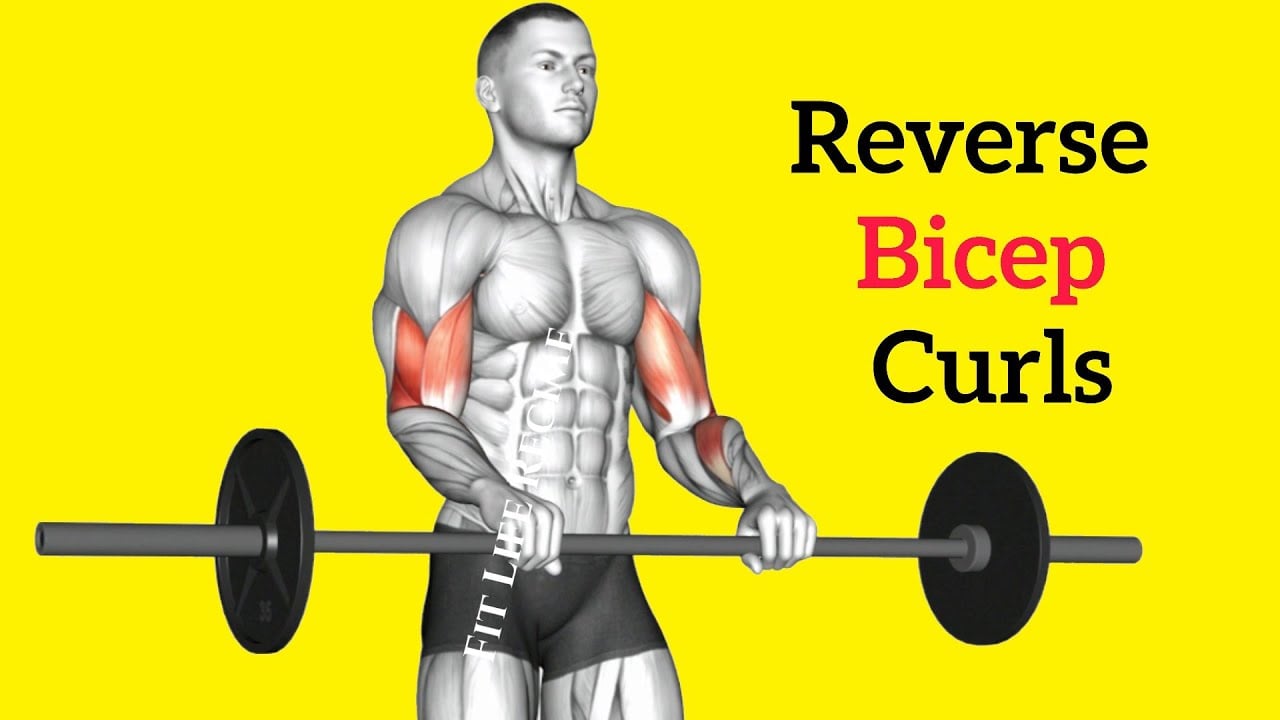Reverse bicep curls can be your secret weapon in your quest to build bigger arms.
The reverse curl is a variation of the standard biceps curl except, instead of gripping the weight with the palms up (underhand grip), your palms are facing down (overhead grip).
It is excellent for building the bicep and brachialis muscles (upper arms) and stimulating the brachioradialis muscle (lower arm).
You can execute the reverse grip bicep curl in many variations, you can do it with a straight barbell, EZ Bar, dumbbells, or a cable machine.
However, the barbell reverse curl is a great staple exercise you can add to the workout regime.
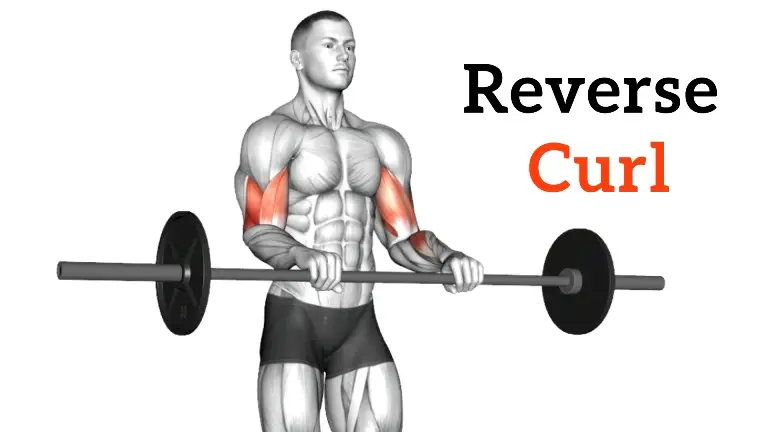
- Reverse Curl Muscles Worked
- How To Do Barbell Reverse Curl
- Form and Techniques
- Benefits Of Reverse Bicep Curls
- Reverse Bicep Curl Variations
- 1. Dumbbell Reverse Curl
- 2. Cable Reverse Curl
- 3. EZ Bar Reverse Curl
- 4. Reverse Bicep Preacher Curl
- 5. Dumbbell Reverse Spider Curl
- 6. Dumbbell Reverse Grip Concentration Curl
- FAQs
- Are Reverse Curls Good for Forearms?
- What does the reverse curl work?
- Are reverse curls worth doing?
- References
Reverse Curl Muscles Worked
- The reverse curl primarily muscle worked the Brachialis, Brachioradialis and Biceps Brachii.
- Some other muscles are worked or stabilizer muscles, including your wrist extenders and rectus abdominis.
- The deltoids and trapezius muscles are also active, but only for stabilization.
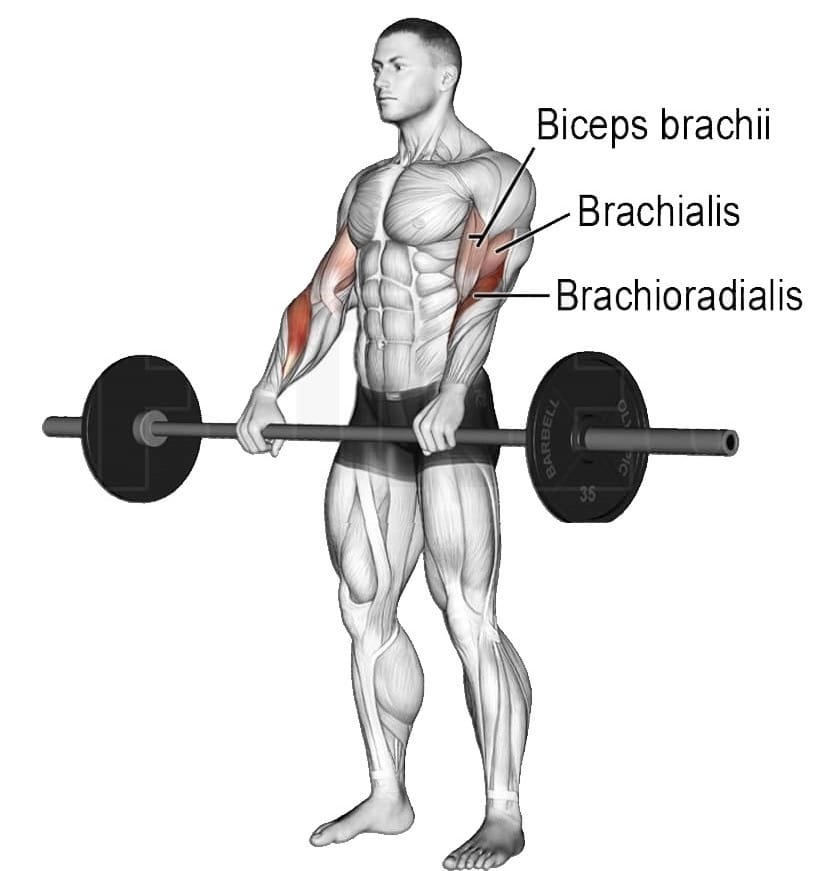
How To Do Barbell Reverse Curl
- Stand upright with your feet shoulder-width apart.
- Hold the barbell with an overhand grip (palms facing down) at shoulder-width apart or slightly narrower.
- Allow your arms to hang fully extended in front of you with the barbell resting against your thighs.
- Keep your elbows tucked close to your sides.
- Curl the barbell upwards without letting your elbows drift forward.
- As you curl the weight, keep your wrists straight. Please do not allow them to bend or flex.
- Keep curling until your forearms are vertical or just short of touching your biceps.
- Pause for a brief moment at the top.
- Slowly lower the barbell back to the starting position.
Form and Techniques
- Keep your hands shoulder-width apart. A wider grip can limit your range of motion, while a narrow grip might increase tension on your wrists.
- Your body should remain fixed. Only your biceps should be used to move the weight.
- Pause at the top of the movement and squeeze your biceps and brachialis muscles.
- A slow controlled descent will increase time under tension, leading to more effective sets, and less risk of injury.
- Ensure that your elbows are kept close to your sides with your knees slightly bent, and your hands gripped tightly to the bar.
- Incorporate proper warm-ups, rest, and nutrition into your exercise program.
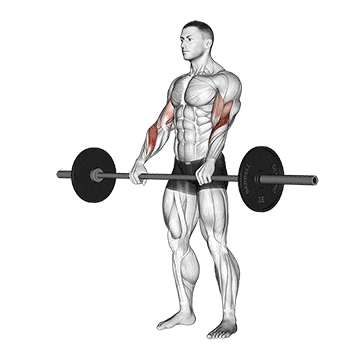
Benefits Of Reverse Bicep Curls
When performed with proper form, the reverse bicep curl offers numerous benefits.
- Reverse curls will change how your arms look, giving you upper and lower arms you can be proud of. It activates muscle groups in your arms, including your biceps brachii, brachialis and Brachioradialis.
- It provides new stimulation, from progressive overload or entirely new mechanical stress, leading to gains.
- It improves your grip strength. A strong grip is a big part of successful strength training.
- The reverse biceps curl helps address forearm imbalances and elbow pain by building the brachialis and brachioradialis muscles. It is sometimes used during the rehabilitation of biceps injuries.
- It is highly beneficial because it engages your forearms better, which grows and strengthens them.
Reverse Bicep Curl Variations
The reverse bicep curl can be performed in various ways to accommodate your fitness level and lifting preference.
If you are new to performing reverse curl, you may want to apply a few modifications to make the exercise easier. One way to counter this problem is to use a lighter weight. Another option is to do a reverse curl with a dumbbell and cable.
If you are looking for a more advanced variation to stimulate different muscle fibers in the bicep, try a reverse grip preacher Curl with a heavier weight.
1. Dumbbell Reverse Curl
Dumbbell Reverse bicep curl is the best variation of the reverse curl, where the dumbbell is gripped palms down. Adding this exercise to your current routine can help build stronger, more toned arms.
The motion is the same as a standard dumbbell curl, but the change in grip allows for targeting specific arm muscles (brachialis).
The reverse grip is also useful for involving the forearms in some of the work.
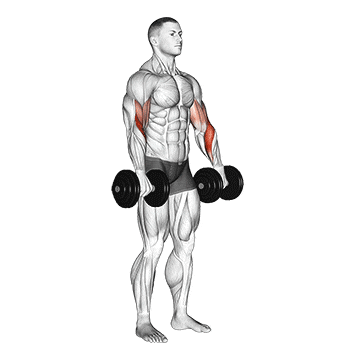
2. Cable Reverse Curl
Reverse cable curl is a cable machine variation of reverse bicep curl that targets the biceps and brachialis. The only reverse cable curl equipment that you really need is the cable machine.
However, there are many reverse cable curl variations that you can try, which may require different types of reverse cable curl equipment and set up.
Such as wide grip cable reverse curl and single arm reverse cable curl.
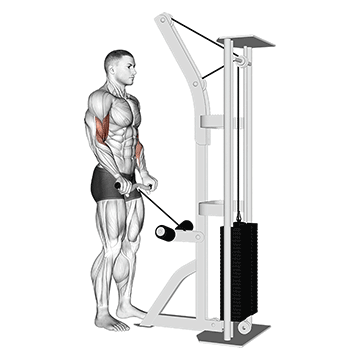
3. EZ Bar Reverse Curl
As the name suggests, the exercise involves curling a barbell, typically an EZ bar, in a reverse grip. It can be a secret weapon in your quest to build bigger forearms and upper arm.
The EZ bar tends to be much more comfortable for trainees, allowing them to use heavier loads. Their slightly more neutral grips also reduce wrist stress.
In a study, the EZ version had the most EMG activity for both the Bicep brachii and brachialis muscles.
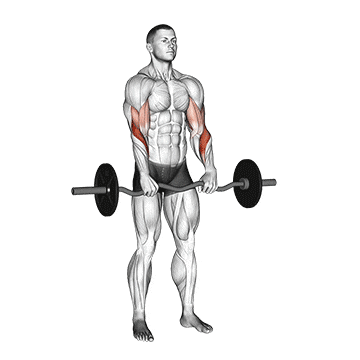
4. Reverse Bicep Preacher Curl
If you’re looking for a way to get more creative with your reverse biceps curls, why not try the reverse preacher curl? It is great for building both the forearm and the upper arm.
During this exercise, the long head of the biceps brachii is activated more than the short head. The long head is stretched out more in this position, which means it can contribute more to the curl.
You can do the reverse bicep preacher curl using a barbell, dumbbell, or EZ-curl bar. However, the dumbbell reverse grip preacher curl provides stability and the full range of motion.
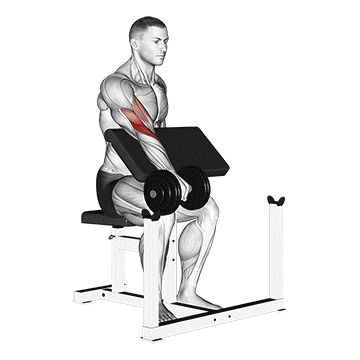
5. Dumbbell Reverse Spider Curl
Dumbbell Reverse spider curl is a variation of the spider curl in which the dumbbell is gripped palm-down. The motion is the same, but the change in grip allows specific arm muscles to be targeted.
The reverse grip places a significant emphasis on the brachioradialis muscle. Strengthening this muscle improves forearm strength and stability, which in turn improves grip strength and pulling movements.
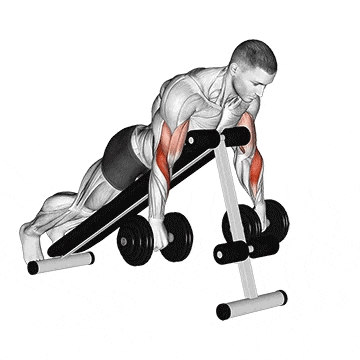
6. Dumbbell Reverse Grip Concentration Curl
The Reverse Grip Dumbbell Concentration Curl is a great basic move and one of the best reverse bicep curl exercise variations for arm workouts.
The dumbbell reverse-grip concentration curl is an isolation exercise that targets the biceps brachii and brachioradialis muscles.

FAQs
Do you have more questions? To find the answers, scroll down.
Are Reverse Curls Good for Forearms?
Yes, the movement is an excellent way to build forearms. They strengthen the biceps brachii, brachialis and the forearm extensors of the forearms and the brachioradialis.
What does the reverse curl work?
Reverse exercise works both the upper and lower arm muscles, including the biceps brachii, brachialis and brachioradialis.
The movement enhances grip strength, builds muscle, enhances strength, and provides a unique new stimulus for the upper body.
Are reverse curls worth doing?
Yes, they are worth the effort. They are effective and challenging and will uniquely improve your arm strength. The pronated grip provides new stimulation and could lead to gains from either progressive overload or entirely new mechanical stress.
References
- Mistry PN, Rajguru J, Dave MR. An anatomical insight into the morphology of the brachialis muscle and its clinical implications. Intern J Anatomy Radiol Surg. 2021;10(2):AO16-AO20.
- Kleiber T, Kunz L, Disselhorst-Klug C. Muscular coordination of biceps brachii and brachioradialis in elbow flexion with respect to hand position. Front Physiol. 2015;6:215. doi:10.3389/fphys.2015.00215
- Marcolin G, Panizzolo F, Petrone N, et al. Differences in electromyographic activity of biceps brachii and brachioradialis while performing three variants of curl. PeerJ. 2018;6:e5165. doi:10.7717/peerj.5165

Manish is a NASM-certified fitness and nutrition coach with over 10 years of experience in weight lifting and fat loss fitness coaching. He specializes in gym-based training and has a lot of knowledge about exercise, lifting technique, biomechanics, and more.
Through “Fit Life Regime,” he generously shares the insights he’s gained over a decade in the field. His goal is to equip others with the knowledge to start their own fitness journey.

